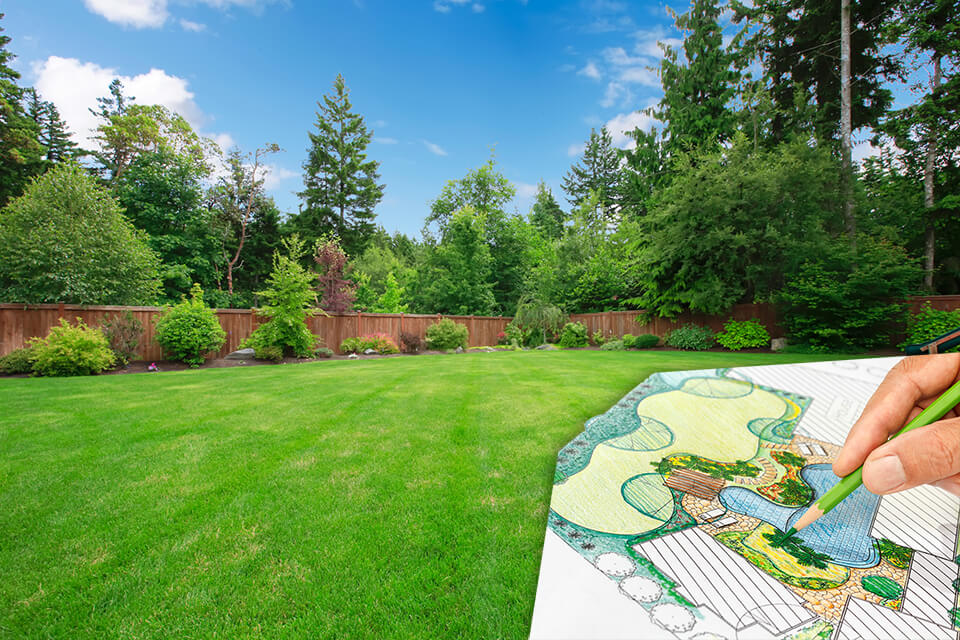The Questions to Ask – Who, What, When, Where, and Why – When Drafting a Landscape Design
Landscape design is the art and science of creating outdoor spaces that are beautiful, functional, and sustainable. Whether you are starting from scratch or simply refreshing an existing space, understanding the 5Ws of landscape design can help guide you through the process. In this blog post, we will explore the Who, What, When, Where, and Why of landscape design, providing you with a comprehensive understanding of the key elements of this exciting field. So, let’s dive in and learn more about the 5Ws of landscape design!
WHO
Who is going to do the design and installation? If you’d like to do it yourself, but aren’t feeling completely confident in being able to do it all, consider contracting out the portions of the project you’re feeling less sure about.
Some people pay for a professional consultation and design and then take care of the installation themselves. Others know what they want but may need assistance with more complex areas of the project, or things that require specialized equipment. And of course there are those who prefer to leave the whole process to a professional landscaping company. You may also need to hire a tradesperson like an electrician or plumber for specific elements of the project.
Also, think about who is going to use the area being redesigned. Will the design benefit all intended users?
WHAT
What do you want your landscape design to look like? Consider the overall style, materials, plants and trees, lighting, etc. What will it take to make your vision become reality?
Are you looking to just add plants, to add or remove trees, to increase or decrease flowerbed areas? Perhaps you want to replace patio area or deck, or make that area larger or smaller.
If you’re adding a pool or hot tub, achieving your vision probably also means adding or replacing a fence, gate, or wall. And adding a water feature or fireplace may require professionals be involved in order to create the space you have envisioned.
WHEN
There are several factors to consider around timing when you’re planning a landscaping project. First, you’ll want to determine how long the project will take and ensure that materials and equipment will be available when you need them. And if you’ll need tradespeople or the help of others, you’ll have to line them up, as well.
Any required permits will take time to acquire, so it’s important to know what you need and apply for permits early in the process.
And remember that your project timeline will be subject to weather conditions, so it’s prudent to expect that your project will take longer than you anticipate, as a contingency.
WHERE
What part of your property are you planning to enhance? Generally, homeowners focus on one area and have specific goals in mind. The front of a home is not typically a place where one spends a lot of leisure time or entertains. The primary benefit of adding landscaping there is improved curb appeal.
Unless a home is located on a corner lot, side yards usually serve as a thoroughfare from front to back. The most common goals for these areas are improved drainage and easier navigation. If the home is located in an urban setting, the side yards can be narrow and shady, so plants should be chosen accordingly.
The backyard is the place where you can add supplemental living space, a place to spend time and entertain. The sky’s the limit for the elements that can be added to make this area more enjoyable.
Another consideration when planning your landscaping project is the type of soil that will provide the foundation for both softscaping and hardscaping. Clay based soil is hard and doesn’t drain well. Sandy soil is soft and doesn’t hold moisture well. Depending on the soil type, it may need to be amended to provide a better foundation for walls and patios, and to provide a better substrate for plants and trees.
WHY
This is where a landscaping project always begins. A homeowner has a vision and goals. Above, we mentioned goals like enhancing curb appeal and creating additional living space. Those are the two most common whys.
More specifically though, new landscaping can address issues like:
- overgrown or hard-to-maintain areas
- unfinished space around a new pool or hot tub
- too much or insufficient natural light
- filling in a spot where an old patio or pool was removed
- lack of privacy or blocked view
No matter your project’s scope, understanding the 5Ws of landscape design can help you create a space that is beautiful, functional and sustainable. And if you need some help creating and/or executing your plan, contact us.

